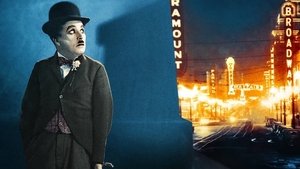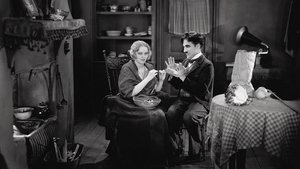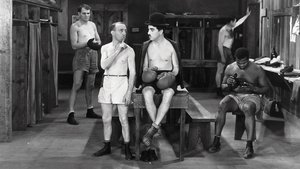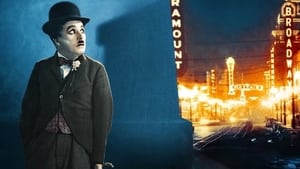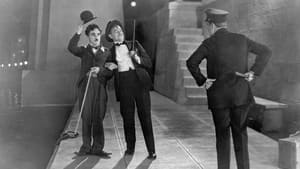Contact: [email protected]
Video Sources 0 Views
- Watch trailer
- City Lights

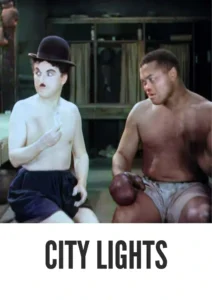
Synopsis
Table of Contents
ToggleReview: City Lights (1931) – A Timeless Masterpiece of Silent Cinema in Vibrant Color

Introduction
“City Lights” (1931) stands as a monumental achievement in the history of cinema, showcasing the unparalleled genius of Charlie Chaplin and the enduring power of silent storytelling. In this article, we embark on a journey through the bustling streets of a bygone era, exploring the significance of this early colored film and its timeless appeal to audiences around the world.
Understanding City Lights 1931: Director, Cast, and Genre
Directed, written, and starring the incomparable Charlie Chaplin, “City Lights” (1931) exemplifies the essence of silent cinema at its finest. Chaplin’s iconic portrayal of the Tramp, alongside Virginia Cherrill as the blind flower girl, captivates audiences with its heartfelt emotion and timeless humor. Blending elements of romance, comedy, and drama, “City Lights” (1931) transcends language barriers to touch the hearts of viewers of all ages.
Exploring the World of City Lights 1931: Plot and Characters
Set against the backdrop of a bustling metropolis, “City Lights” (1931) follows the Tramp’s misadventures as he befriends a blind flower girl and falls in love with her. As he navigates the challenges of urban life, he encounters a colorful cast of characters, from wealthy socialites to down-and-out drunks, each offering a glimpse into the human condition. Through its poignant storytelling and nuanced performances, “City Lights” (1931) invites viewers to laugh, cry, and ultimately, to believe in the power of love and hope.
The Art of Film Colorization
Film colorization serves as a transformative tool that enhances the visual experience of classic movies, breathing new life into timeless stories and captivating audiences with vibrant hues. By digitally adding color to black and white films, colorization allows viewers to immerse themselves in the rich tapestry of cinematic worlds, exploring every nuance and detail with fresh eyes and renewed appreciation.
Early Colored Films: A Brief History
The history of colored films traces its roots back to the early days of cinema, with filmmakers experimenting with various techniques to add color to their creations. From hand-tinted frames to early Technicolor processes, the evolution of colored film has been marked by innovation and ingenuity, paving the way for the development of modern colorization techniques that continue to captivate audiences to this day.
City Lights 1931 and Its Early Colored Version
The decision to release “City Lights” (1931) in a colorized format was met with both excitement and trepidation. While some welcomed the opportunity to experience the film in vibrant color, others expressed concerns about the potential impact on its visual aesthetic. Nevertheless, the early colored version of “City Lights” (1931) offers viewers a fresh perspective on Chaplin’s timeless masterpiece, enhancing its emotional resonance and captivating audiences with its luminous beauty.
The Debate Over Film Colorization
The debate over film colorization continues to divide audiences and critics alike, with proponents praising its ability to breathe new life into classic movies and introduce them to a new generation of viewers, while detractors argue that it compromises the artistic integrity of the original work and diminishes its historical significance. As the debate rages on, filmmakers and audiences alike are left to ponder the merits and drawbacks of colorization in the ever-evolving landscape of cinema.
Examining City Lights 1931 as an Early Colored Film
As with any colorized classic, the impact of colorization on “City Lights” (1931) is a matter of personal interpretation. Some may argue that it enhances the film’s visual appeal and immerses viewers in its world, while others may feel that it detracts from the stark beauty of the original black and white version. Regardless of one’s stance on the issue, there’s no denying the enduring power of “City Lights” (1931) as a timeless masterpiece that continues to captivate audiences with its heartfelt emotion and timeless humor.
Influence and Legacy: City Lights 1931’s Impact on Cinema
“City Lights” (1931) has left an indelible mark on the world of cinema, inspiring countless filmmakers and captivating audiences with its timeless tale of love and redemption. From its unforgettable performances to its sweeping cinematography, the film continues to resonate with viewers of all ages, reaffirming its status as a beloved classic of the silent era.
Director’s Cinematic Legacy: Beyond City Lights 1931
Charlie Chaplin’s influence extends far beyond “City Lights” (1931), with a diverse body of work that continues to captivate audiences around the globe. From “The Kid” to “Modern Times,” Chaplin’s films are celebrated for their wit, charm, and social commentary, solidifying his legacy as one of the greatest filmmakers of all time. Through his groundbreaking work, Chaplin has left an indelible imprint on the world of cinema, inspiring generations of filmmakers to follow in his footsteps.
Themes Explored in City Lights 1931
“City Lights” (1931) explores a myriad of themes, from the transformative power of love to the resilience of the human spirit in the face of adversity. Through its richly drawn characters and poignant storytelling, the film invites viewers to ponder the complexities of the human condition and the enduring strength of the human heart. As audiences immerse themselves in the world of “City Lights” (1931), they are reminded of the universal truths that bind us together and the timeless beauty of Chaplin’s vision.
Reception and Controversy Surrounding City Lights 1931
Upon its release, “City Lights” (1931) received widespread critical acclaim, with many praising its heartfelt performances, timeless humor, and poignant storytelling. However, the decision to release the film in a colorized format sparked debate among purists, reigniting the age-old discussion surrounding film preservation and artistic integrity. Despite the controversy, “City Lights” (1931) remains a beloved classic that continues to resonate with audiences of all ages, reaffirming its status as a timeless masterpiece of the silent era.
Where to Watch City Lights 1931 Online
For those eager to experience the timeless magic of “City Lights” (1931), the film is readily available on popular streaming platforms such as Netflix, Amazon Prime, and Hulu. Whether you choose to watch it in its original black and white format or the early colored version, “City Lights” (1931) promises to transport you to a world of laughter, tears, and unforgettable moments that will stay with you long after the credits roll.
FAQs About City Lights 1931
Q: Is “City Lights” (1931) based on a true story? A: No, “City Lights” (1931) is a fictional tale crafted by Charlie Chaplin, drawing inspiration from his own experiences and observations of urban life.
Q: Who are the main actors in “City Lights” (1931)? A: “City Lights” (1931) stars Charlie Chaplin in the iconic role of the Tramp, alongside Virginia Cherrill as the blind flower girl and a talented ensemble cast of supporting players.
Q: What awards did “City Lights” (1931) win? A: While “City Lights” (1931) did not win any major awards, it received critical acclaim for its heartfelt performances, timeless humor, and poignant storytelling.
Q: Why was “City Lights” (1931) released in a colorized format? A: The decision to release “City Lights” (1931) in color was made to introduce the film to a new generation of viewers and enhance its visual appeal for modern audiences. While the choice to colorize the film sparked debate among purists, it ultimately allowed “City Lights” (1931) to reach a wider audience and ensure its continued relevance in the annals of cinematic history.
Conclusion
“In City Lights (1931),” Chaplin’s masterful blend of humor, pathos, and visual storytelling continues to enchant audiences with its timeless charm and universal appeal. Whether viewed in its original black and white format or the early colored version, “City Lights (1931)” remains a shining example of the power of cinema to touch the hearts and minds of viewers around the world. As we celebrate the enduring legacy of Chaplin’s masterpiece, let us remember the timeless truths it imparts about love, laughter, and the indomitable spirit of the human soul.

